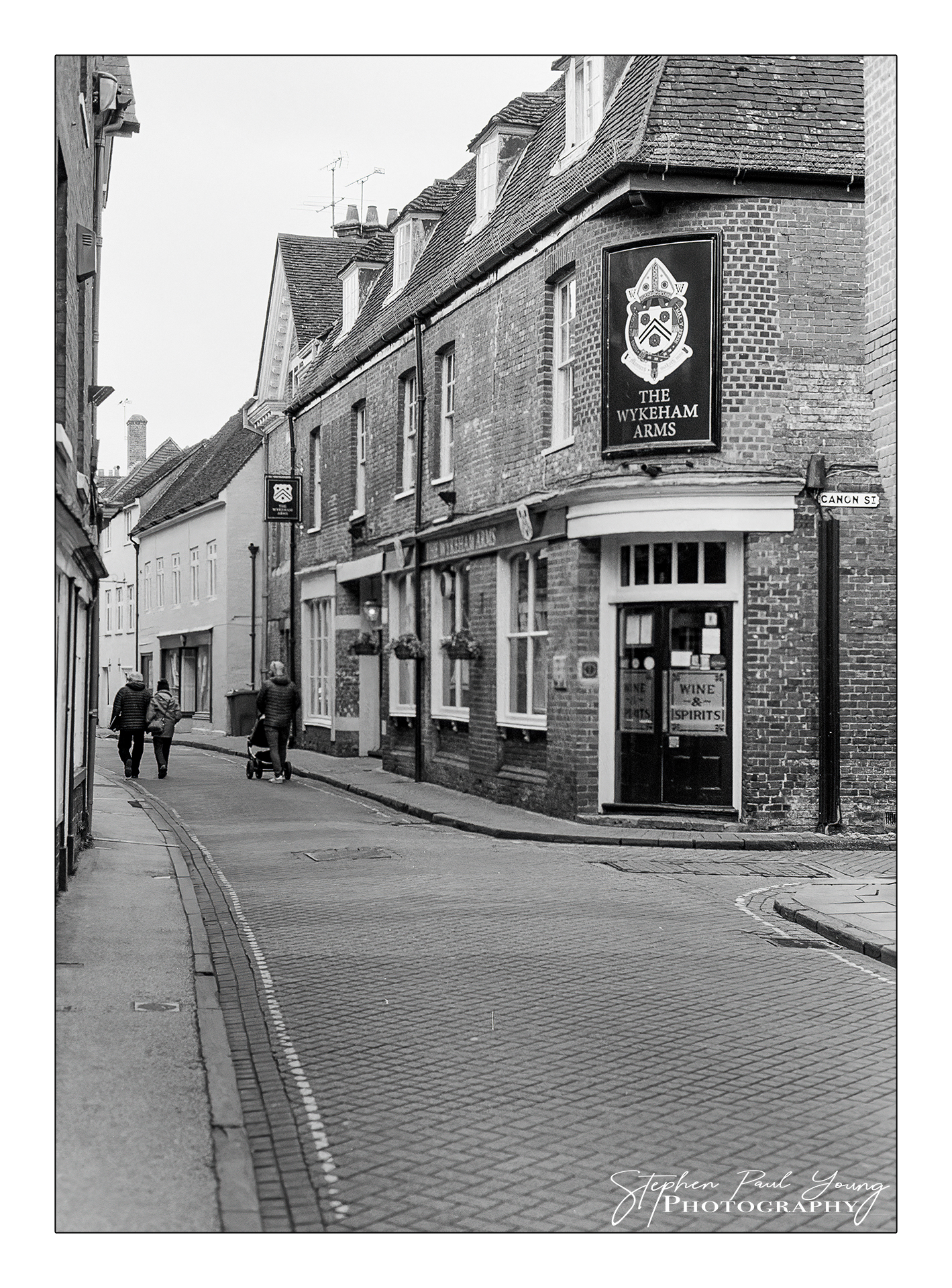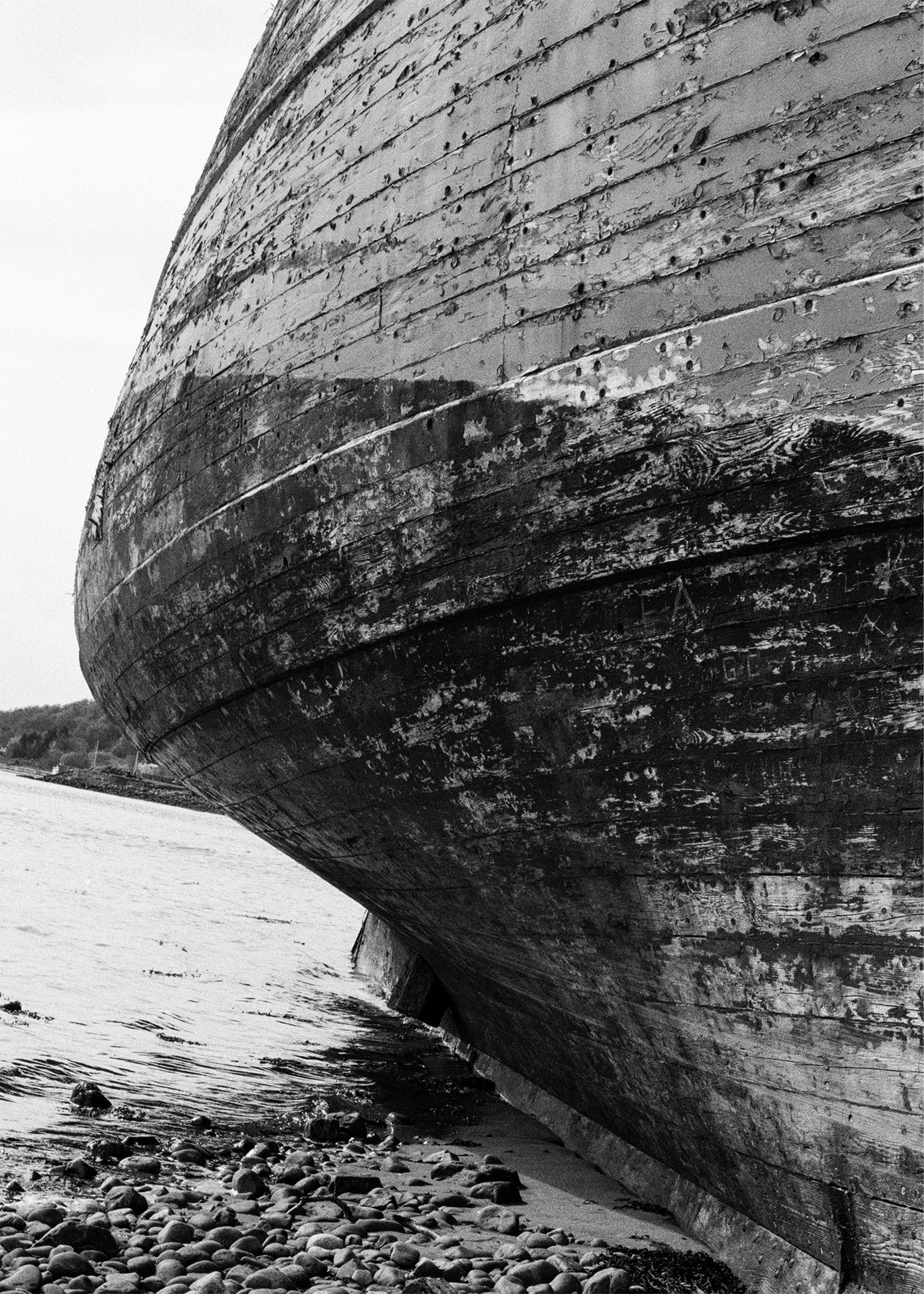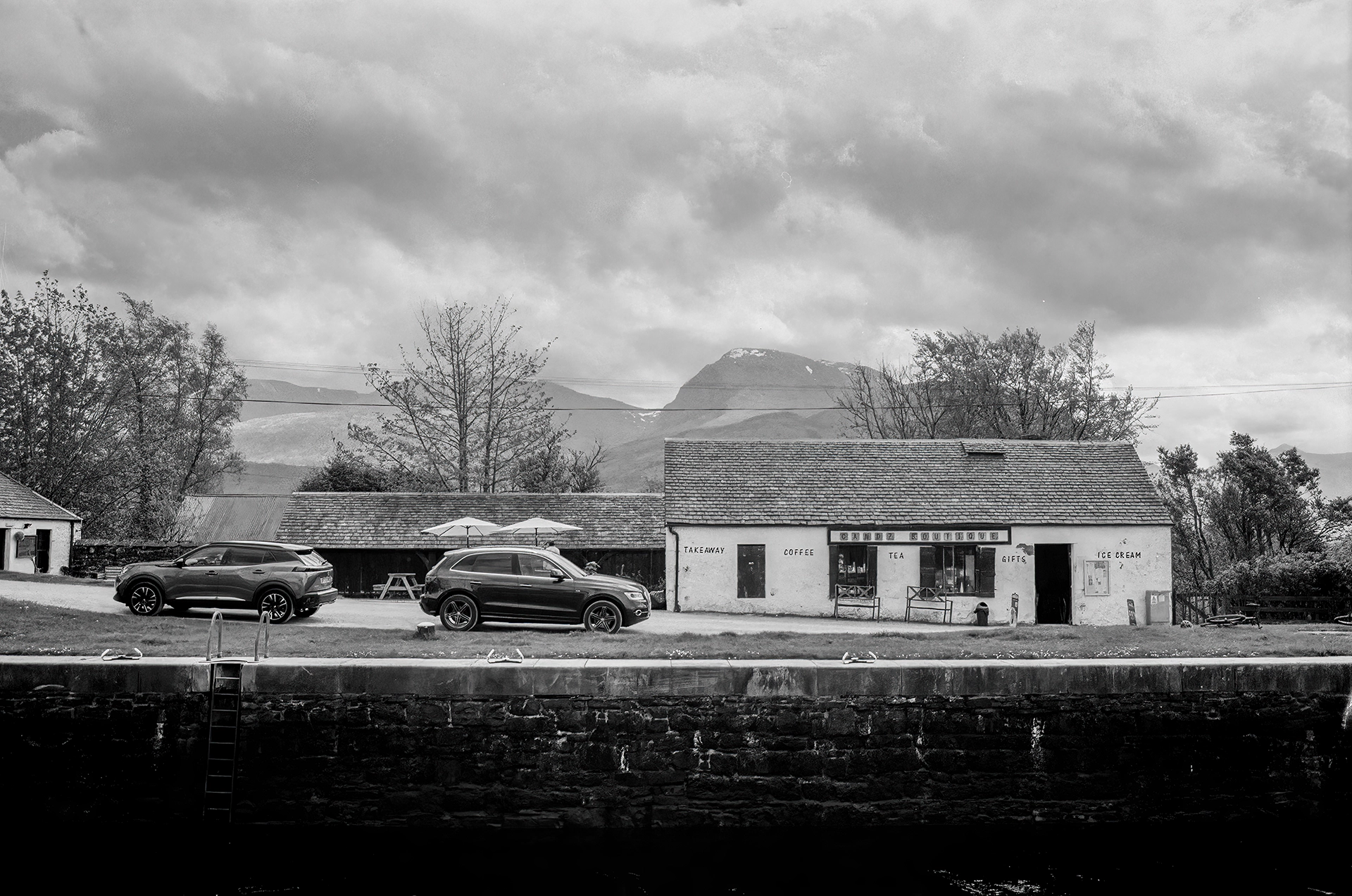Demystifying the Art of Film Grain
“Discover the Difference: More or Less Film Grain?”
What is Film Grain Introduction

Film grain is a visual effect that is created when light passes through a film negative. It is a result of the physical structure of the film and the chemical processing of the film. Film grain can be used to create a certain look or feel to a movie or photograph. It can also be used to add texture and depth to an image.
The question of whether it is better to have more or less film grain is a subjective one, as it depends on the desired look and feel of the image. In this article, I will explore the pros and cons of having more or less film grain and discuss the best practices for achieving the desired effect. So, what is film grain in photography?
This 35mm photograph was taken on an old Canon AE-1 Program loaded with a roll of HP5+. The film is ISO400 however, in camera, I pushed the ISO setting 1 stop to ISO800. This helped me produce a darker, grainier image.
Exploring the Pros and Cons of More vs. Less Film Grain
When it comes to grain, there are pros and cons to having more or less of it. Film grain is the grainy texture that appears on film prints and digital images. It is caused by the random arrangement of silver halide crystals on the film.
On the plus side, more film grain can give an image a vintage, nostalgic look. It can also add texture and depth to an image, making it look more interesting as in the image above. On the other hand, too much film grain can make an image look noisy and muddy.
Less grain can give an image a cleaner, sharper look. It can also make an image look more modern and contemporary. However, too little film grain can make an image look flat and lifeless.
Ultimately, the amount of grain you use is a matter of personal preference. Some people prefer the look of more film grain, while others prefer the look of less. Experiment with different amounts of film grain to find the look that works best for you.
How to Achieve the Perfect Balance of Film Grain for Your Project
Achieving that perfect balance of grain for your project can be a tricky task. But with a few simple tips, you can get the look you want without compromising the quality of your footage.
First, it’s important to understand what grain is and why it’s important. Film grain is the random texture that appears on film when it’s exposed to light. It’s a natural part of the film-making process and can add a unique look and feel to your project.
When it comes to achieving the perfect balance of grain, there are a few things to keep in mind. First, you’ll want to make sure you’re using the right type of film for your project. Different types of film will produce different levels of grain, so it’s important to choose the right one for your project.
Next, you’ll want to adjust the amount of grain in your footage. This can be done in post-production by using a plugin or software that allows you to adjust the amount of grain. You can also adjust the amount of grain in-camera by changing the ISO or shutter speed.
Finally, you’ll want to make sure you’re using the right lighting for your project. Different lighting setups will produce different levels of grain, so it’s important to experiment with different lighting setups to find the right balance for your project.
By following these tips, you can achieve the perfect balance of grain for your project. With a little experimentation and practice, you’ll be able to get the look you want without compromising the quality of your footage.
5 Steps to Achieve Balance for your Photography Project
- Understand the film type: Different film types have different inherent grain characteristics. Some films, like ISO 100, tend to have finer grains, while higher ISO films, like ISO 800 or above, may have more pronounced grain. It’s essential to understand the characteristics of the film you are using and how it affects the grain in your final image.
- Experiment with different film stocks: Various film stocks have distinct grain patterns and levels. You can experiment with different film stocks to find the one that best suits your creative vision. For example, if you want a vintage or nostalgic look, you may choose a film stock with a higher grain structure. Conversely, if you prefer a cleaner, sharper look, you may opt for a film stock with a finer grain structure.
- Consider the lighting conditions: Lighting conditions can affect the appearance of grain in your photos. Low-light situations or underexposure can result in more prominent grain, while well-lit scenes or overexposure may produce finer grain. Understanding how lighting conditions impact grain can help you make intentional choices when composing and exposing your photos.
- Adjust film development time: Film development time can also impact the grain structure of your images. Overdeveloping your film can result in more pronounced grain, while underdeveloping can yield finer grain. Experimenting with different development times can help you achieve the desired balance of grain in your final images.
- Post-processing techniques: Post-processing can also play a role in achieving the perfect balance of film grain. You can use software or tools to add or reduce grain in your digital scans or prints. Experimenting with different post-processing techniques, such as adjusting contrast, sharpness, and noise reduction, can help you fine-tune the grain in your images to achieve the desired effect.
Remember, achieving the perfect balance of film grain is subjective and depends on your creative vision and aesthetic preferences. Experimentation and practice are key to finding the right balance that suits your photography project.
How to Use Film Grain to Enhance Your Visuals
Film grain is a great way to add texture and depth to your visuals. It can be used to give your images a vintage or classic look, or to add a unique touch to your work. Here’s how to use film grain to enhance your visuals.
First, you’ll need to decide what type of grain you want to use. There are a variety of different types of grain, from subtle to heavy. You can also choose from different colours, such as black and white, sepia, or even colour.
Once you’ve chosen the type of grain you want to use, you’ll need to decide how much grain you want to add. You can use a slider to adjust the amount of grain, or you can manually adjust the amount of grain in each image.
Next, you’ll need to decide where you want to apply the grain. You can apply it to the entire image, or just to certain areas. You can also use a brush to apply the grain to specific areas.
Finally, you’ll need to adjust the opacity of the grain. This will determine how visible the grain is in the image. You can adjust the opacity to make the grain more or less visible.
Using film grain can be a great way to add texture and depth to your visuals. With a little experimentation, you can find the perfect amount of grain to give your images a unique look.
Understanding the Different Types of Film Grain and Their Effects
Film grains in photography is an important part of the filmmaking process, and understanding the different types of grain and their effects can help you create the look you want for your project.

First, let’s talk about what causes film grain. Film grain is the random texture that appears on film when it is exposed to light. It is made up of tiny particles of silver halide crystals that are suspended in the emulsion of the film. These particles are what give film its unique look and feel.
Now, let’s look at the different types of film grain effect.
Fine Grain: Fine grain is the most common type of film grain. It is characterised by small, uniform particles that create a smooth, even texture. This type of grain is often used for low-light situations, as it helps to reduce the amount of noise in the image.
Medium Grain: Medium grain is slightly larger than fine grain, and it creates a slightly rougher texture. This type of grain is often used for scenes with more light, as it helps to add a bit of texture and depth to the image.
Coarse Grain: Coarse grain is the largest type of film grain, and it creates a very rough texture. This type of grain is often used for scenes with a lot of light, as it helps to add a gritty, textured look to the image.
Grain Clumping: Grain clumping is a type of film grain that is characterised by large clusters of particles. This type of grain is often used to create a dreamy, ethereal look in the image.
Noise: Noise is a type of film grain that is characterised by random, uneven particles. This type of grain is often used to create a gritty, gritty look in the image.
Understanding the different types of film grain and their effects can help you create the look you want for your project. Whether you’re looking for a smooth, even texture or a gritty, textured look, there’s a type of film grain that can help you achieve your desired effect.
Film Grain Examples




Conclusion
It is ultimately up to the individual to decide whether more or less film grain is better. Some people may prefer the look of more film grain, while others may prefer the look of less. Ultimately, it is a matter of personal preference.
How can I add grain to my photos for free?
There are also numerous post processing techniques for digital imagery called 35mm film grain overlay or free film grain, worth googling film grain download.
FAQ
Q1: What is film grain? A1: Film grain refers to the visible, often granular texture seen in photographic film images. It is caused by the random arrangement of silver halide crystals on the film surface. In digital photography and filmmaking, the term is used to describe a similar aesthetic intentionally added to mimic the organic and nostalgic look of traditional film.
Q2: Why is film grain considered an art form? A2: Film grain is considered an art form because it adds character and mood to an image. It can enhance the storytelling by creating a sense of nostalgia, authenticity, or a specific time period. Filmmakers and photographers often use it as a creative tool to evoke emotions and add a cinematic quality to their work.
Q3: How is film grain different from digital noise? A3: Film grain and digital noise are similar in appearance, but they have different origins. Film grain is a result of the physical properties of film, while digital noise is caused by electronic interference in digital sensors. Film grain is often considered more aesthetically pleasing and is intentionally added for artistic reasons, whereas digital noise is usually seen as an undesirable artifact.
Q4: Can film grain be added in post-production for digital footage? A4: Yes, film grain can be added during post-production using various software tools and filters. Filmmakers and photographers often use these tools to achieve a specific look or to emulate the characteristics of a particular film stock. This allows for greater control over the intensity and type of grain applied to the footage.
Q5: Are there different types of film grain? A5: Yes, there are various types of film grain, each associated with different film stocks. Some are more fine-grained, while others have a more pronounced and gritty appearance. The choice of film grain type can significantly impact the visual style and mood of a film or photograph.
Q6: How does film grain affect image quality? A6: Film grain, when used intentionally, is not necessarily detrimental to image quality. Instead, it adds a unique and subjective aesthetic. It’s important to note that excessive grain or unintentional noise can impact image clarity, so careful consideration and moderation are key when incorporating film grain into creative work.
Q7: Are there benefits to using film grain in the digital age? A7: Yes, there are several benefits to using film grain in the digital age. It can provide a vintage or timeless quality to images, enhance storytelling, and create a sense of authenticity. Additionally, film grain can soften digital sharpness and help blend visual elements, contributing to a more organic and cinematic look.
Q8: Can film grain be distracting in certain contexts? A8: While film grain is generally embraced for its artistic qualities, it can be distracting if used excessively or inappropriately. It’s important for filmmakers and photographers to consider the intended mood and style of their work and apply film grain judiciously to enhance rather than detract from the overall visual experience.
Q9: How do I experiment with film grain in my own projects? A9: Experimenting with film grain involves testing different types and intensities of grain to find the look that best complements your creative vision. Many post-production software tools offer customisable grain effects. Start with small adjustments and gradually increase intensity until you achieve the desired result. It’s essential to consider the narrative and emotional impact of the film grain on your specific project.
Q10: Can film grain be used in any genre or style of filmmaking? A10: Yes, film grain can be applied to a wide range of genres and styles, from drama and romance to science fiction and horror. Its versatility makes it a valuable tool for filmmakers and photographers looking to enhance the visual storytelling in their projects. Adapt the intensity and type of film grain to suit the mood and atmosphere you want to convey.
Like what you read? Fuel my next post with a coffee – hit that PayPal button and keep the caffeine flowing!
[wpedon id=77]